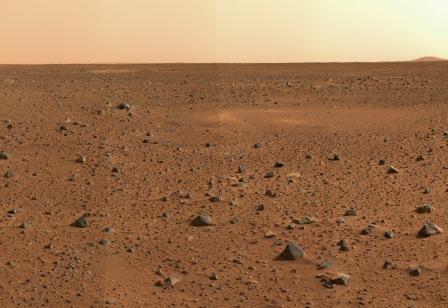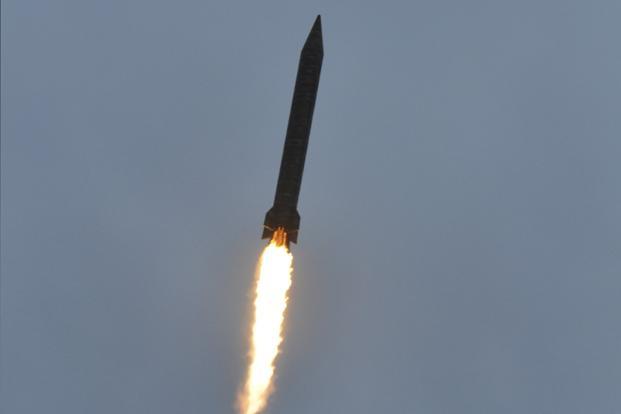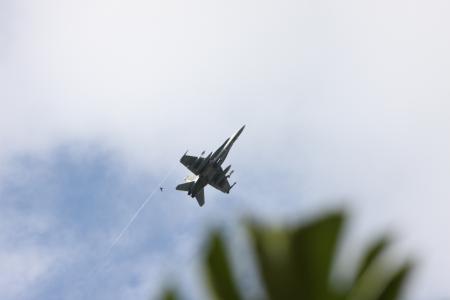
A NASA photo
WASHINGTON (PTI): The bulk of rocks on the surface of Mars look similar to the 'Black Beauty' meteorite found a few years ago in the Moroccan desert, a new study suggests.
The meteorite NWA 7034 has been shown to be a 4.4 billion-year-old chunk of the Martian crust.
Spectroscopic measurements of the meteorite are a spot-on match with orbital measurements of the Martian dark plains, areas where the planet's coating of red dust is thin and the rocks beneath are exposed, researchers said.
The findings suggest that the meteorite, nicknamed Black Beauty, is representative of the "bulk background" of rocks on the Martian surface, said Kevin Cannon, a Brown University graduate student and lead author of the new paper.
When scientists started analysing Black Beauty in 2011, they knew they had something special. Its chemical makeup confirmed that it was a castaway from Mars, but it was unlike any Martian meteorite ever found.
Before Black Beauty, all the Martian rocks found on Earth were classified as SNC meteorites (shergottites, nakhlites, or chassignites).
They're mainly igneous rocks made of cooled volcanic material. But Black Beauty is a breccia, a mashup of different rock types welded together in a basaltic matrix.
It contains sedimentary components that match the chemical makeup of rocks analysed by the Mars rovers.
Scientists concluded that it is a piece of Martian crust - the first such sample to make it to Earth.
Cannon and co-author Jack Mustard from Brown thought Black Beauty might help to clear up a longstanding enigma: the spectral signal from SNC meteorites never quite match with remotely sensed spectra from the Martian surface.
After acquiring a chip of Black Beauty from Carl Agee from the University of New Mexico, Cannon and Mustard used a variety of spectroscopic techniques to analyse it.
"What we wanted to do was get an average for the entire sample. That overall measurement was what ended up matching the orbital data," said Cannon.
Researchers said the spectral match helps put a face on the dark plains, suggesting that the regions are dominated by brecciated rocks similar to Black Beauty.
Because the dark plains are dust-poor regions, they're thought to be representative of what hides beneath the red dust on much of the rest of the planet.
"Mars is punctured by over 400,000 impact craters greater than 1 km in diameter. Because brecciation is a natural consequence of impacts, it is expected that material similar to NWA 7034 has accumulated on Mars over time," they said.
In other words, Mustard said, the bulk of rocks on the surface of Mars probably look a lot like Black Beauty: "dark, messy and beautiful."
 Previous Article
Previous Article Next Article
Next Article












The Indian Air Force, in its flight trials evaluation report submitted before the Defence Ministry l..
view articleAn insight into the Medium Multi-Role Combat Aircraft competition...
view articleSky enthusiasts can now spot the International Space Station (ISS) commanded by Indian-American astr..
view article